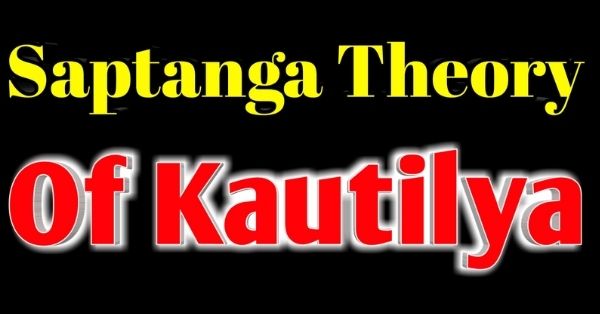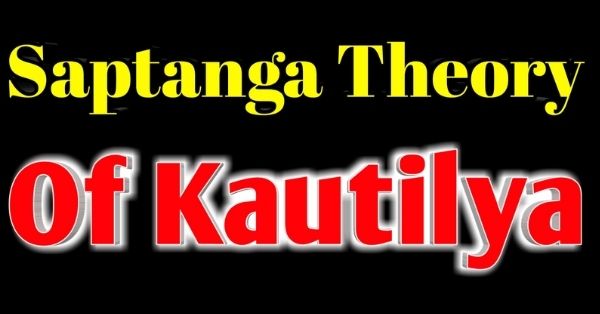Like his predecessor Manu, Kautilya has also given the saptanga theory of the state. According to him that state(Rajya) consisted of seven-element (Prakritis) such as swamin (The sovereign), Amatyas(Ministers), Janapada(territory and population,, Durga(fort), kosha(Treasury), Bala(Army), and Mitra(Ally) which may be discussed below:
 |
You can read this-kautilya theory of kingship
Seven elements of the state
◆Swamin
Swamin means the person or persons wielding sovereign power of the state.Swamin is the king or the head of the state who is all in all in administering the state and controlling its powers.Swamin is the first and foremost element of the state without which the state can not be constituted. Kautilya’s Swamin is not a feudal chieftain but a veritable sovereign owing allegiance to none.
◆Amatyas
Amatyas means the ministers or high officials who assist and advise the king in the field of state administration. They are high born, native, loyal, and responsible to the king.
◆Janapada
The third element of the state is janapada which includes territory and population. Kautilya has divided janapada into eight categories based on organization and functions. It also ensures easy, strong, and efficient administration.
◆Durga
Durga is the fourth element of the state which is very vital from the defense point of view. Kautilya gave primacy and utmost importance to the preservation of the state for which construction of forts in inaccessible areas was necessary. He spoke of different types of forts such as hill forts, water forts, and desert forts. Emphasizing the need and utility of the fort, Kautilya wrote, “Whoever of the two kings builds an impregnable fort on a spot inaccessible by nature with less labor and expenditure overreaches the other”.
◆Kosha
The fifth element of the state is kosha or state treasury which much be replenished for a self-sufficient and self-reliant state. Without a rich treasury, the development of the state and the people could not be undertaken. Kautilya viewed that the state treasury should be filled with gold, silver, and other valuable things to face natural calamities and other contingent situations. For the growth of treasury, Kautilya emphasized increasing agricultural and industrial products, the prosperity of trade and commerce.
◆Bala
Bala means the standing army of the state which is very vital for the preservation of the state. Kautilya spoke of six types of armies or forces such as hereditary forces, hired troops, soldiers of fighting corporations, troops belonging to an ally, troops belonging to an enemy, and soldiers of wild tribes. Among all of these, Kautilya gave top priority to hereditary forces or army which he considered as the ideal army. Because down from their forefathers their efficiency and loyalty had been well tested. Kautilya also spoke of different organizations within the army such as infantry, cavalry, elephants, and chariots.
◆Mitra
The seventh and the last element of the state is Mitra or ally which is also necessary for the preservation and development of the state. Kautilya spoke of two types of Mitra-Sahaja mites(real ally) and Kritrima Mitra (artificial ally). A Sahaja Mitra is one whose friendship has been proved from the time of his forefathers and one that is close to the territory of neighbor’s enemy. A Kritrima Mitra is one who becomes an ally or friend only to protect his own life and property. Kautilya preferred Sahaja Mitra to Kritrima mites.
Conclusion
Though Kautilya had discussed about elements of the state later on he reduced them to only two -King and kingdom. However, the original five elements like Swamin, Amatyas, Kosha, Bala, and Mitra are covered by the broad element ‘King’.In the second broad element of ‘Kingdom’, Janapada and Durga are included.
